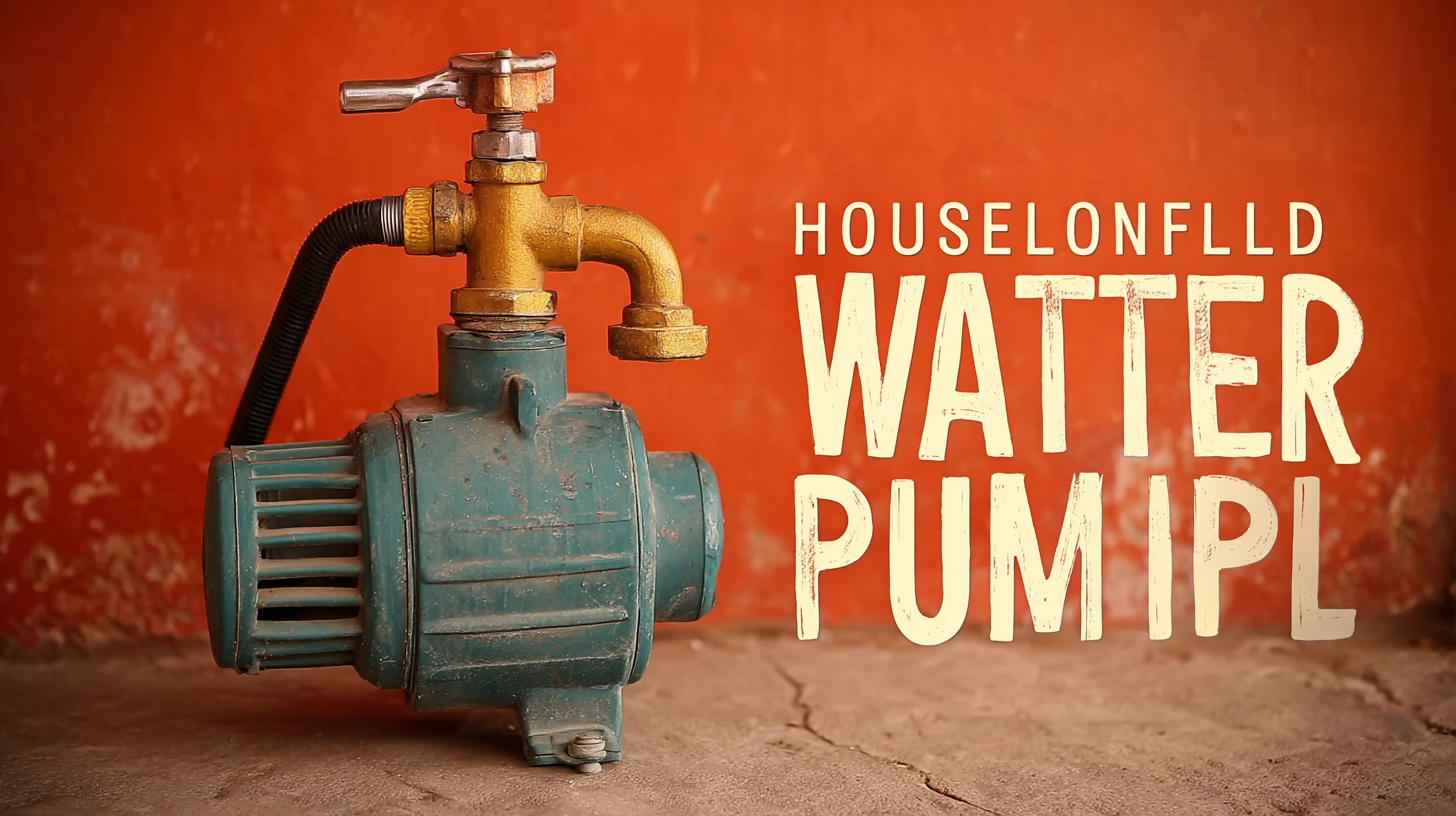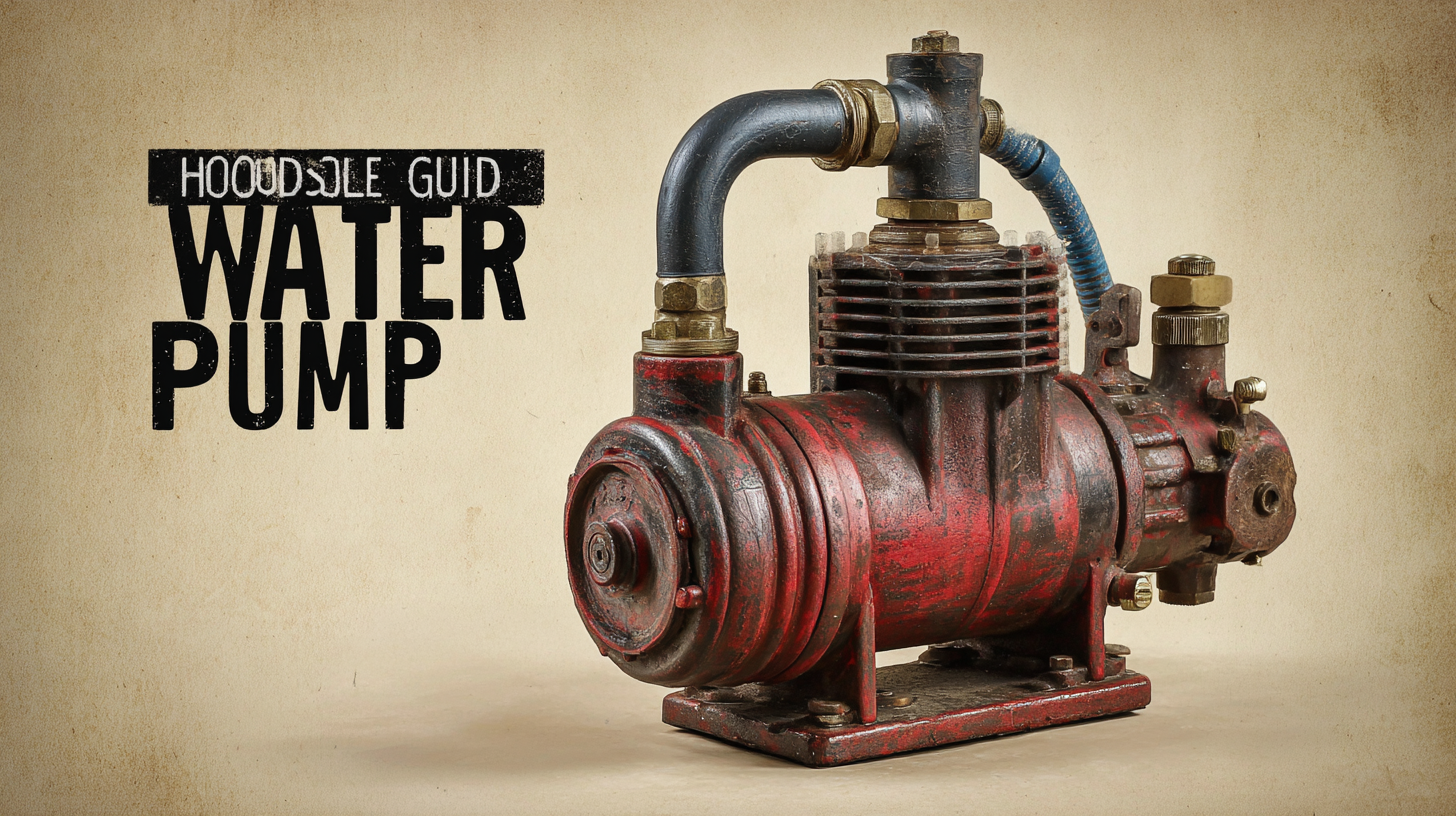
When it comes to managing water supply in your home, the importance of selecting the right Household Water Pump cannot be overstated. Whether you’re looking to enhance your irrigation system, manage stormwater runoff, or simply need a reliable solution for transferring water, understanding the various types and features of water pumps is essential. This ultimate guide aims to equip homeowners with the top strategies for choosing the best Household Water Pump that fits their specific needs.

We will delve into key considerations such as pump types, horsepower, efficiency, and installation requirements, helping you navigate the complexities of water pumps with ease. By the end of this guide, you will be well-prepared to make an informed decision, ensuring that your home remains water-efficient and comfortable year-round.
When selecting the right type of water pump for your household needs, it's essential to first assess your specific requirements. According to a report by the Water Systems Council, around 43 million U.S. households rely on private wells, highlighting the significant need for effective water pumps in residential settings. Factors such as the size of your home, the volume of water you require, and the source of your water will determine the ideal pump. For instance, submersible pumps are efficient for deep wells, while jet pumps are suitable for shallower sources.
Tips: When choosing a water pump, consider the pump's flow rate and pressure. A household typically requires a pump with at least 10 gallons per minute (GPM) for basic water needs. Additionally, evaluate the total dynamic head (TDH) to ensure the pump can effectively transport water from its source to your home.
Another crucial aspect is energy efficiency. The U.S. Department of Energy states that energy-efficient pumps can save homeowners up to 30% on their energy bills. Look for pumps with good energy ratings and consider installing a variable-frequency drive (VFD) to help optimize performance based on your actual water demand. This not only provides better service but also reduces wear and tear on the pump, prolonging its lifespan.

In 2025, the landscape of household water pumping solutions is set to be revolutionized by cutting-edge technological innovations. With an emphasis on energy efficiency, many new models are now equipped with smart sensors that optimize water flow and minimize unnecessary energy consumption. These pumps not only enhance performance but also reduce your utility bills, making them a cost-effective choice for homeowners.
When considering a water pump, one key tip is to look for models that offer remote monitoring capabilities. This feature allows you to oversee the pump’s status from your smartphone, giving you peace of mind whether you’re at home or away. Additionally, investing in pumps with variable speed settings can significantly improve efficiency by adjusting the flow rate according to your specific needs.
Another important aspect to consider is the materials used in the pump’s construction. Innovations in corrosion-resistant materials can extend the lifespan of the pump, ensuring it performs well even in challenging conditions. Always choose pumps with high durability ratings, as this can save you both time and money in the long run. With these advancements, the right water pump can transform your household’s water management.
| Feature | Description | Technological Innovation | Best Use Case |
|---|---|---|---|
| Flow Rate | The amount of water a pump can move in a specific time. | Smart flow regulation systems for efficiency. | Irrigation and general household use. |
| Power Source | Electricity, gasoline, or solar-powered options. | Solar integration for off-grid locations. | Remote or sustainable water supply. |
| Portability | Weight and ease of transport. | Compact designs with ergonomic handles. | Emergency situations and outdoor activities. |
| Self-Priming | Ability to clear air from the pump automatically. | Enhanced self-priming mechanisms. | Low water level applications. |
| Durability | Resistance to corrosion and wear over time. | Advanced materials and coatings. | Long-term residential or agricultural applications. |
 When selecting a household water pump, determining the optimal pump capacity is crucial for ensuring efficient water supply. According to the American Water Works Association (AWWA), the average household consumes around 300 gallons of water per day. Therefore, a water pump designed to meet this demand should ideally have a capacity that exceeds the daily requirement, particularly during peak usage times. For instance, if a household expects to use water for irrigation, washing, and other daily activities, a pump with a capacity of at least 15-20 gallons per minute (GPM) is recommended to accommodate both routine and extra needs.
When selecting a household water pump, determining the optimal pump capacity is crucial for ensuring efficient water supply. According to the American Water Works Association (AWWA), the average household consumes around 300 gallons of water per day. Therefore, a water pump designed to meet this demand should ideally have a capacity that exceeds the daily requirement, particularly during peak usage times. For instance, if a household expects to use water for irrigation, washing, and other daily activities, a pump with a capacity of at least 15-20 gallons per minute (GPM) is recommended to accommodate both routine and extra needs.
Additionally, it's important to consider the specific application for which the pump will be used. The National Ground Water Association (NGWA) suggests that well systems typically operate best with pumps that can achieve a total dynamic head (TDH) based on the depth of the well, the elevation of the home, and any additional fixtures in use. Accurately calculating TDH will help homeowners select a pump that not only meets their flow rate requirements but also operates efficiently and reduces energy consumption. A thorough understanding of these parameters ensures a better fit for your household’s water supply needs, ultimately leading to enhanced performance and lower operational costs.
When selecting a household water pump, one critical factor to consider is its energy efficiency ratings. Understanding these ratings not only impacts your utility bills but also contributes to sustainability in water usage. Pumps that operate at higher efficiency levels can significantly reduce energy consumption, which is beneficial for both the environment and your pocket.
Tip: Look for pumps with Energy Star certification, as they meet strict energy efficiency guidelines set by the Environmental Protection Agency. In addition to saving energy, these pumps often offer superior performance and longevity, making them a smart investment for eco-conscious homeowners.
Moreover, consider the pump's operational capacity in relation to its energy consumption. A pump that delivers high output while consuming less energy can offset initial costs over time through savings on your electricity bills.
Tip: Always check the flow rate and power usage specifications of potential pumps to make informed comparisons. Choosing a pump with an optimal balance of power and efficiency can lead to sustainable pumping practices, ensuring you meet your household needs without excessive energy waste.
Maintaining your household water pump is crucial for its longevity and optimal performance. Regular checks can prevent minor issues from escalating into costly repairs. Start by inspecting the pump for any signs of wear and tear, such as leaks or unusual noises. Addressing these issues early can significantly extend the lifespan of your pump.
Another essential tip is to keep the pump and surrounding area clean. Dirt and debris can hinder performance and cause unnecessary strain on the pump. Periodically clear away any obstructions and ensure that the intake screen is free from clogs. This simple maintenance step can enhance efficiency and prolong the pump's operational life.
Lastly, it's important to ensure that the pump is correctly sized for your needs. Using an oversized or undersized pump can lead to inefficiencies and damage over time. Review your water usage requirements and consult with professionals if necessary to select the right pump. Proper sizing combined with regular maintenance will keep your household water pump in excellent condition for years to come.
TradeManager
Skype
VKontakte
